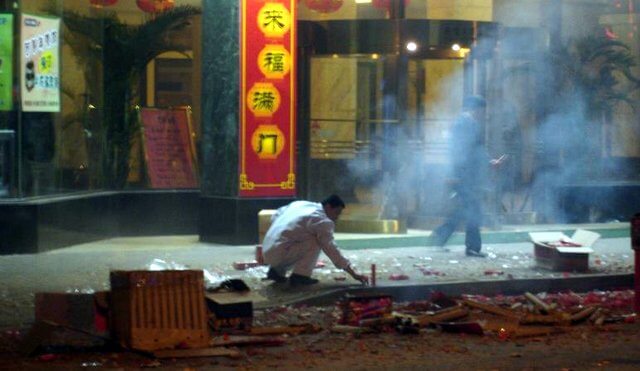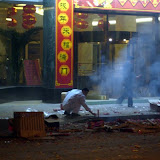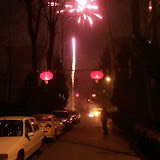
I had the pleasure of spending New Year’s Eve with three generations of a Chinese family. After a great home cooked meal we settled down to watch the traditional state-produced News Year’s Eve TV show, which typically gets an audience share of over half of China’s 1.4 billion people.
The show is very carefully planned, with an audience of invited and vetted guests watching the best entertainers from all over China. The first half is predominantly some very impressive dancing and acrobatics taken from China’s 56 ethnic minority groups.
As the evening progresses the minorities disappear in favour of famous entertainers such as Jay Chou, a songwriter and singer who recently starred in The Green Hornet, the much-loved crosstalk comedy duos, magicians and pointed comedy sketches. This year two of the sketches were based around being unable to afford accommodation, which is the government’s way of warning about looming measures to control house prices. Others involved remarkable acrobatic skills, “Chinese Opera Baby™” and most inexplicably: goldfish doing synchronised swimming.
One painful moment came when some foreigners were brought out to show that they too can learn Chinese, but due to a sound sync problem it looked suspiciously like they were being dubbed over, which led to comparisons with the badly timed dubbing of the Hong Kong films of the 70s.
Throughout the evening, and the surrounding fortnight, there is a constant background noise of fireworks and firecrackers. Firecrackers here regularly come in chains of 5000 and the noise is supposed to scare away evil demons. Fireworks were banned for a few years in Beijing due to too many injuries, but that was recently lifted and people are once again enjoying the opportunity of losing minor body parts and accidentally setting fire to scrubland where it hasn’t rained for over a hundred days now.
At midnight we all went outside to blow stuff up and I learnt a few things: Everyone in China loves fireworks; fireworks are cheap here; every year the population is getting richer. As a result there were a lot of fireworks. Every family had boxes and boxes of every type of firework.
We were in a compound with hundreds of families and limited open ground. All these factors resulted in the most concentrated, enduring, loudest, impressive and excessive firework display I’ve seen either in person or on film. This was happening in every complex in every street of every part of the city and the resulting maelstrom put the Beijing Olympics $100million worth of fireworks to shame.
An interesting aspect was that because of the high rise nature of the city it’s often possible to be watching fireworks looking down from above.
10,000 city workers were on standby to tidy up the city of discarded firework remnant and launchers. As we drove home through the streets they’d started work but had a huge task ahead of them as piles and piles of cardboard tubes and red tissue lay outside almost every doorway.
By the following morning only 200 or so fires had been reported throughout the city and none too serious. This is a great improvement on last year when among the casualties was the secondary tower of the CCTV complex. Despite still being under construction it was used as a platform to store and launch fireworks. Unsurprisingly all the sparks from the launched fireworks set fire to the boxed fireworks and a big bonfire ensued. This was watched out the window by most of Beijing’s residents yet somehow failed to get coverage on the national TV channel, CCTV. I do hope a policeman was standing below saying ‘Nothing to see here, move along, move along…’
YouTube Links:
Fireworks from above:









I find it amusing that you can find yourself watching the fireworks from above! haha…that’s gotta be weird
There were also quite a few helicopters flying that night to watch for fires – they must have had an amazing view of the fireworks
Pingback: Chinese New Year in Beijing